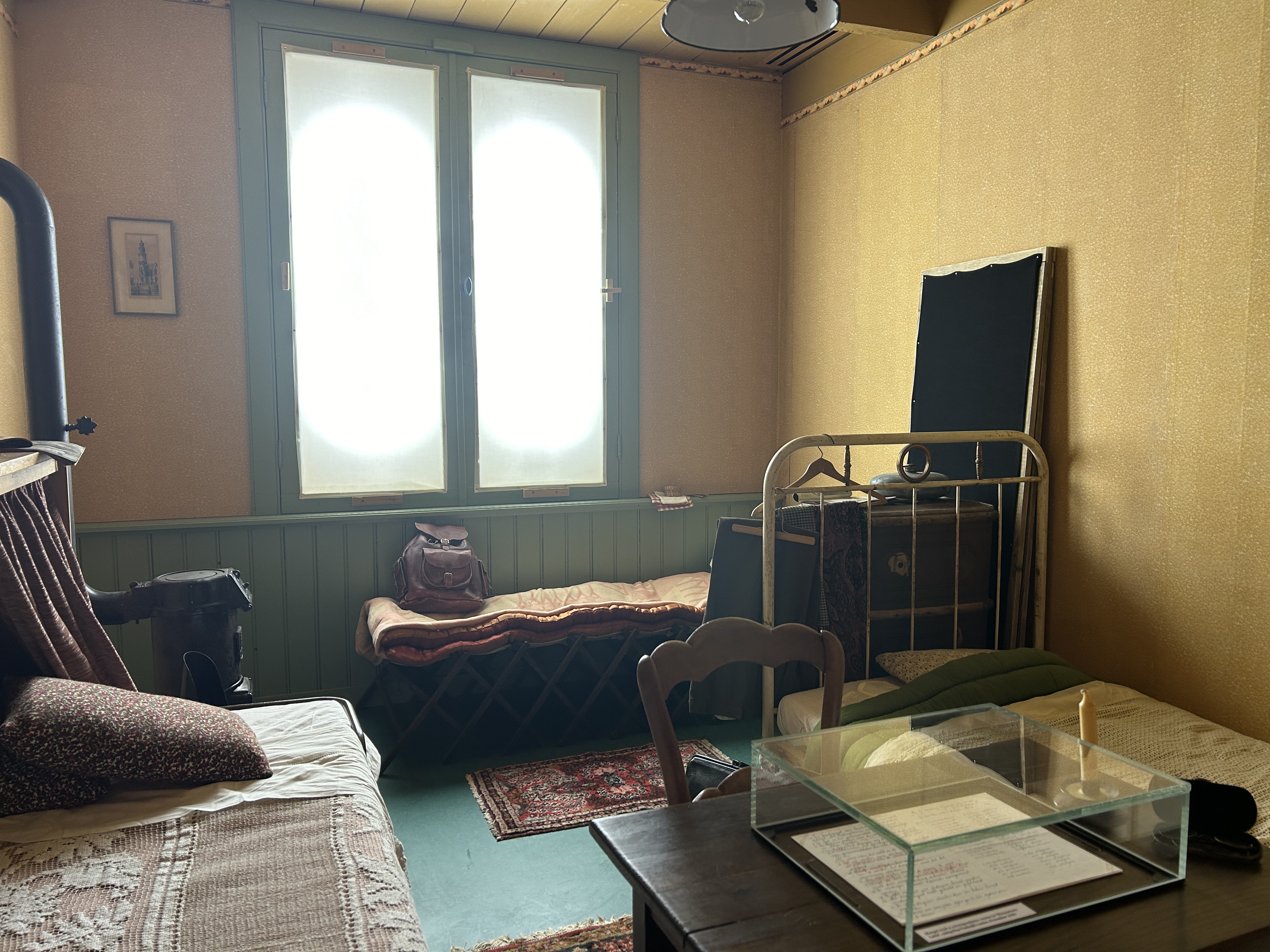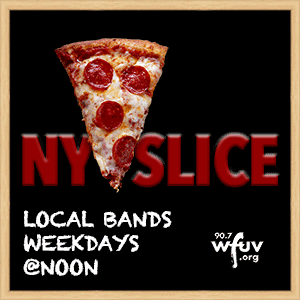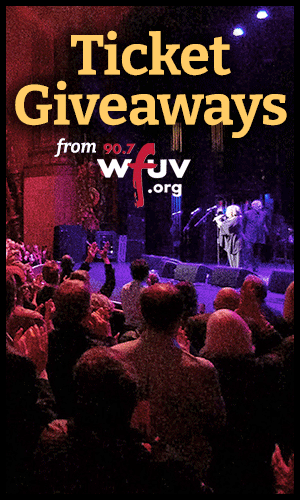Anne Frank House Exhibition Arrives in NYC

(Photo by Avery Loftis for FUV)
One of the Netherlands' most-visited attractions has arrived in New York City in a unique way. "Anne Frank: The Exhibition" a full-scale recreation of the annex in Amsterdam where Frank, her family and others hid from the Nazis for two years, is now at the Center for Jewish History. WFUV’s Avery Loftis previewed the exhibit.
LOFTIS: When you first walk into Anne Frank: The Exhibition the first thing you see is Anne Frank’s famous diary, in English and Dutch. The books are behind a glass case. The Dutch version “Het Acter-huis,” meaning “The Secret Annex,” refers to the house where the Franks hid for two years during World War II.
LOFTIS: Doyle Stevick with the Anne Frank Center at the University of South Carolina is one of the exhibit’s partners. He says that the books that start and end the showcase add to the power of the exhibition
DOYLE STEVICK: “When I was in school, Anne Frank's diary was the only thing written by somebody my age that I encountered. Everything else was from adults, and the idea that a young person's voice could matter was profound.”
LOFTIS: Stevick says this exhibition is geared toward people Frank's age. Before entering the replica of The Annex — a full-scale recreation of the Franks house in Amsterdam – there is a display of artifacts. These are items like Anne Frank’s first photo album and a hand-written invitation from one of her friends. As visitors round the corner, snapshots of Anne smiling with her sister transition to photos of Nazi’s and Swastikas. The exhibit also includes an audio tour, in which narrators read quotes from Anne and her father, Otto Frank.
EXHIBIT NARRATION: “Looking back, Otto Frank said: ‘life in the Netherlands was our own after our experiences in Nazi Germany. We could make a fresh start and feel free”
LOFTIS: Anne Frank House Executive Director Ronald Leopold anticipates that thousands of students will experience the exhibition.
RONALD LEOPOLD: I hope that young audiences, through those many artifacts that we present that shed a light on a teenage life hiding, is all about the hope to survive. So what you see in this exhibition is what the daily life of a teenager looked like while in hiding, knowing, of course, what has happened afterwards.
LOFTIS: After hearing about the rise of Nazi Germany, visitors move into a room surrounded by screens. Maps of Europe and black-and-white photos transition underneath a narrated history of Jewish persecution during World War II. Moving into the next doorway, there is a dark space that leads into the Franks Annex. The entrance is crammed with a small wooden desk and a creaky cot. And the windows are fogged and covered in the exhibition as they were to protect the family. In a ceiling speaker, narration explains that the Franks spent months hiding in The Annex.
EXHIBIT NARRATION FROM ANNE FRANK: In her diary, Anne tried to remain hopeful: “One day, this terrible war will be over. The time will come when we'll be people again, and not just Jews.”
LOFTIS: Leopold also says that the experience marks Anne Frank’s journey from childhood to her fulfilled wish to publish a book about World War II. Leopold says that he hopes the exhibit will inspire students to stand up to prejudices in their own lives. LOFTIS: I’m Avery Loftis,
That was WFUV’s Avery Loftis at The Center for Jewish History in Manhattan, where Anne Frank: The Exhibition will be on view until April 2025.

